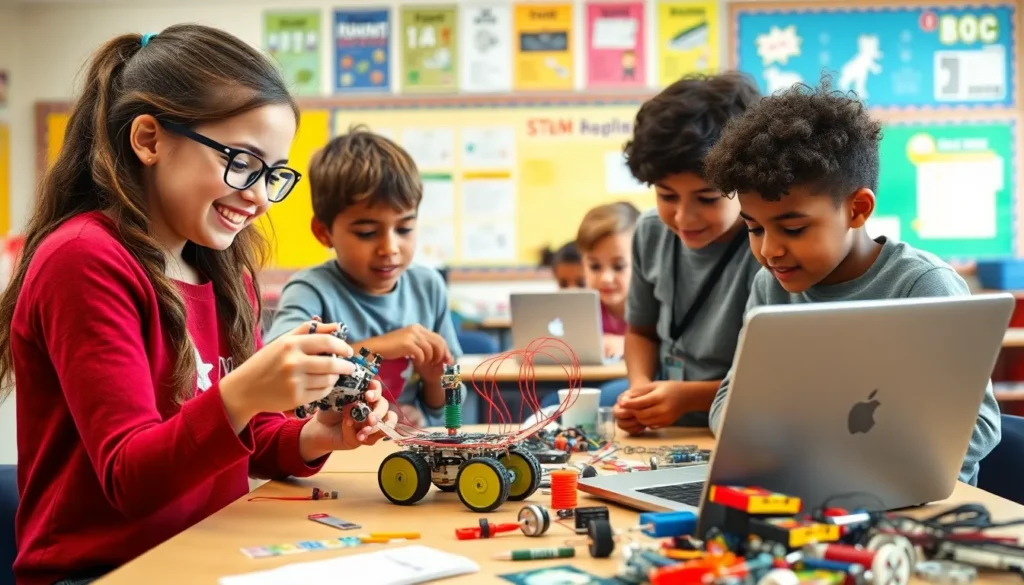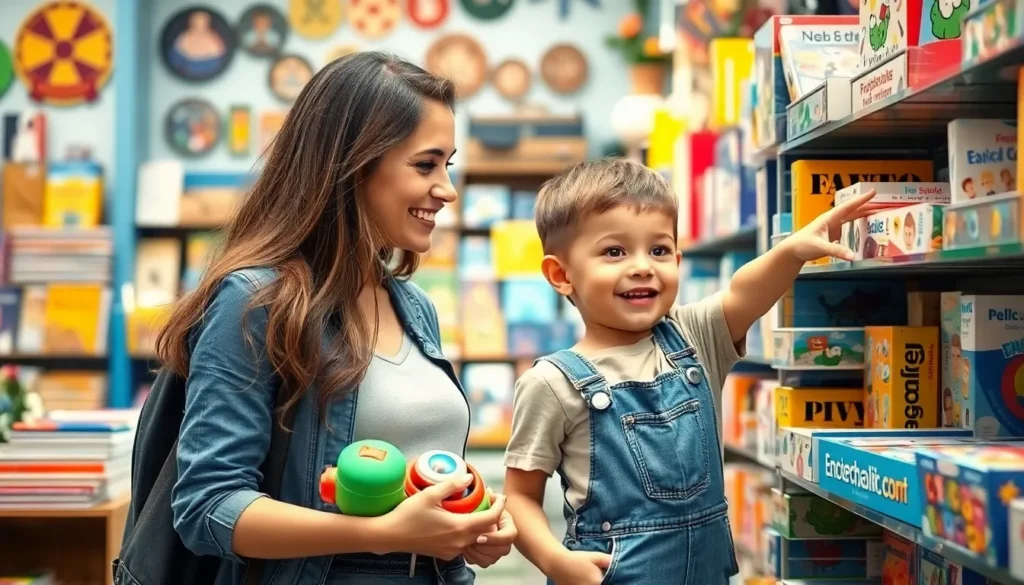Table of Contents
ToggleIn the world of homeschooling, the quest for effective teaching tools can feel a bit like searching for a needle in a haystack. Enter homeschool manipulatives, the unsung heroes of <a href="https://anyoneslearning.com/stem-curriculum“>hands-on learning that make math and science as exciting as a treasure hunt. These colorful blocks, counting bears, and geometric shapes aren’t just toys; they’re the secret sauce that transforms abstract concepts into tangible experiences.
Overview Of Homeschool Manipulatives
Homeschool manipulatives serve essential educational purposes. They include various hands-on tools designed to aid understanding in subjects like math and science. Colorful blocks help visualize mathematical operations. Counting bears offer a tangible way to teach basic arithmetic.
Educators often utilize these resources to transform abstract ideas into physical experiences. Incorporating manipulatives fosters engagement and retention of knowledge. Children grasp concepts more readily when they can manipulate objects. Moreover, they encourage exploration and creativity during learning activities.
Different types of manipulatives exist to accommodate various learning styles. For instance, geometric solids support spatial awareness while providing a tactile learning experience. Additionally, number lines assist in developing number sense and understanding positive and negative values.
Many families find that combining digital resources with physical manipulatives enhances the homeschooling process. Apps and online tools complement the hands-on experience when utilized effectively. This combination promotes a well-rounded education that addresses multiple senses.
Incorporating manipulatives into lessons also promotes collaboration among students. Group activities that involve manipulatives lead to social interaction and the sharing of ideas. This dynamic interaction can foster critical thinking and problem-solving skills in a collaborative setting.
Ultimately, homeschool manipulatives enrich the learning experience. They bridge gaps in understanding and make learning enjoyable. Through these interactive resources, educators can create a student-centered learning environment that prioritizes engagement and comprehension.
Types Of Homeschool Manipulatives

Homeschool manipulatives come in various forms designed to cater to different learning styles. These tools enhance understanding and engagement through hands-on experiences.
Physical Manipulatives
Physical manipulatives often include items like base ten blocks, counting bears, and geometric solids. Base ten blocks support understanding of place value and addition, while counting bears offer a fun way for children to grasp basic arithmetic. Geometric solids help develop spatial awareness, providing a tactile method for exploring shapes and their properties. Additionally, other examples such as pattern blocks and fraction tiles allow students to visualize mathematical concepts. Using physical manipulatives encourages exploration, enhances comprehension, and promotes collaborative learning among students.
Digital Manipulatives
Digital manipulatives encompass online tools and apps that support interactive learning experiences. Platforms like virtual math labs and educational games provide engaging ways for students to explore math concepts. With features like drag-and-drop functionality, these digital resources allow students to manipulate elements in a virtual environment. Websites and applications often include immediate feedback, reinforcing concepts effectively. Moreover, many digital manipulatives complement physical tools, making lessons dynamic and adaptable to various settings. Utilizing these resources fosters motivation and contributes to a more rounded educational experience.
Benefits Of Using Homeschool Manipulatives
Homeschool manipulatives enhance the educational experience significantly. They provide students with hands-on opportunities that captivate attention and foster deeper understanding.
Enhancing Learning Engagement
Using manipulatives increases students’ interest in learning. Engagement levels rise as they interact with physical objects, transforming lessons into exciting activities. For example, while using colorful blocks, a student can visualize math operations, making the learning process more relatable. Incorporating counting bears in lessons enriches arithmetic practice. Active participation helps maintain focus, ensuring concepts resonate better. Children often express enthusiasm as they explore these tools. An engaging learning environment promotes retention, leading to improved academic performance.
Supporting Different Learning Styles
Homeschool manipulatives cater to various learning preferences. Visual learners benefit from geometric solids that illustrate spatial relationships effectively. Kinesthetic learners thrive when they can handle objects, like base ten blocks, during math activities. Some students find that using number lines strengthens their number sense considerably. Children with auditory strengths may enjoy discussing strategies while using these resources. Adaptability in teaching approaches allows families to address diverse educational needs. This inclusivity fosters an environment where every student can succeed, reinforcing overall comprehension.
Tips For Choosing The Right Manipulatives
Selecting the right manipulatives is crucial to enhancing the homeschooling experience. Consider the following factors for effective choices.
Assessing Learning Objectives
Identify specific learning goals when choosing manipulatives. Each manipulative supports different educational aims, such as developing math skills or fostering scientific inquiry. Evaluate how a manipulative aligns with the curriculum. For instance, base ten blocks focus on foundational math concepts, while counting bears assist with basic arithmetic. Manipulatives should encourage interactive learning and support the intended outcomes. Tailoring selections to meet these objectives increases engagement and reinforces understanding.
Considering Age Appropriateness
Select manipulatives that match the child’s developmental stage. Age-appropriate tools enhance learning by catering to their cognitive abilities. Younger children benefit from colorful, tactile objects that facilitate basic concepts. For example, geometric solids assist with spatial awareness, while older students might need more complex tools, like fraction tiles. Always ensure the complexity of the manipulative aligns with the child’s current skills, as this promotes confidence and encourages exploration. Balancing challenge and support makes learning enjoyable and effective.
Homeschool manipulatives are invaluable tools that transform the learning experience. By providing hands-on opportunities, they engage students and promote a deeper understanding of complex subjects. These resources cater to various learning styles, ensuring that every child can thrive in their education.
Families can enhance their homeschooling journey by thoughtfully selecting manipulatives that align with educational goals and developmental stages. This thoughtful approach not only fosters academic growth but also creates an inclusive environment where exploration and creativity flourish. Embracing manipulatives in homeschooling ultimately leads to a richer and more effective learning experience, making education enjoyable and impactful.







